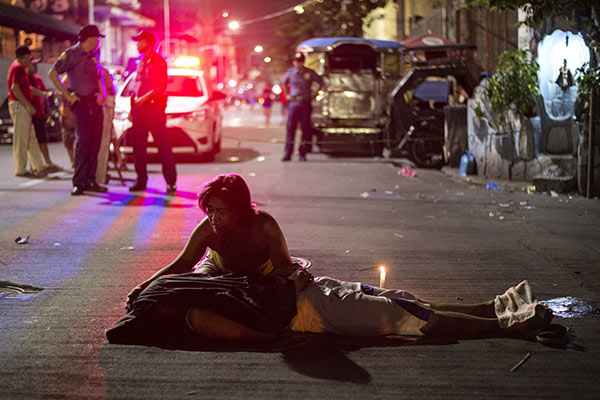No takeoff

The year opens for the Aquino administration with what Palace officials are downplaying as a setback in the controversy over the Ninoy Aquino International Airport Terminal 3 (NAIA-3).
Palace officials have said the government isn’t letting go of the NAIA-3 despite an adverse ruling by the Washington-based International Centre for Settlement of Investment Disputes.
The ruling allows Germany’s Fraport AG to initiate new proceedings against the Philippine government. The International Centre, an attached unit of the World Bank, had earlier ruled, like a Singapore-based arbitration body, that the Anti-Dummy Law was violated by Fraport.
While the government ponders the full impact of the ruling and its next move, it should address several urgent concerns.
One is to make Terminal 3 fully operational, to ease congestion at what foreign investors have described as the “ancient” Terminal 1, the original Manila International Airport.
For this the government must invest a substantial sum in rehabilitating Terminal 3, which fell into disrepair in the years when litigation prevented its opening. The taxiway will have to be shut down and only one runway used by all international, domestic and general aviation flights.
Full operation may also require the government to address the second urgent concern, which is to quickly settle once and for all the ownership dispute over NAIA-3.
The dispute is keeping international carriers from moving their operations to NAIA-3 even if it has roomier facilities than Terminal 1.
Settling the ownership dispute with Fraport, operator of Germany’s international hub in Frankfurt, will also address the third urgent concern, which is to regain the confidence of German (and many other European) investors in the Philippines.
Yesterday Christian-Ludwig Weber-Lortsch, who has been Germany’s top diplomat in Manila for three years now, said Fraport’s woes hindered his efforts to bring his country’s investors to the Philippines.
Weber-Lortsch suggested a negotiated settlement of the ownership dispute. Fraport is demanding millions of dollars in compensation for its investment in the terminal, which was constructed under a BOT or build-operate-transfer scheme.
The Arroyo administration expropriated NAIA-3 from Fraport and its local partner Philippine International Air Terminals Co. (PIATCO) in late 2004 amid allegations of corruption and overpricing.
A fourth concern that must be addressed is that allegation. If true, it must be firmly established and the guilty punished. Coupled with the ruling confirming violation of the Anti-Dummy Law, a decision establishing corruption could make it easier for the ambassador to tell his compatriots that expropriating the terminal was justified.
The use of dummies by foreign companies is also a matter of urgent concern, but with no immediate remedy in sight. Foreign investors use local dummies to go around the 40 percent constitutional limit on foreign ownership. We can only hazard a guess on the prevalence of this practice. Its remedy is to amend the Constitution, but Charter change doesn’t look like a priority of either Congress or P-Noy at this point.
Even if investors see that a foreign company has indeed violated a host country’s laws against corruption and the use of dummies, the investors will still be spooked by the failure of the company to recoup its money – an estimated $400 million in the case of Fraport, of which a large chunk allegedly went to payoffs.
That’s a lot of money down the drain. The P-Noy administration must reassure German and other European investors that their money is safe in this country, that rules and laws aren’t malleable, that the investment environment in general is predictable.
* * *
In the Global Competitiveness Reports of the past three years, prepared by the World Economic Forum, the Philippines consistently ranked lowest in terms of air transport infrastructure among the so-called ASEAN-6 – the six earliest members of the Association of Southeast Asian Nations.
Singapore ranked at the top with its world-class Changi International Airport. Malaysia ranked second, with Thailand closing in. Indonesia ranked fourth. Vietnam, where many German investors have been putting their money in the past decade, ranked ahead of the Philippines.
Foreign investors have pointed out that the NAIA still needs a cargo terminal and better night navigation and landing facilities. Terminals 2 and 3 are not being used for their original purposes, with NAIA-3 underutilized. The NAIA complex also needs a new fuel depot (the old one leaks) and fuel lines.
Upgrading air transport facilities is among the recommendations of the Joint Foreign Chambers of the Philippines to spur economic growth.
The group wants the Diosdado Macapagal International Airport – the former US air base – to serve as an alternative international gateway, later becoming the country’s premier gateway, with the NAIA used exclusively for domestic flights. A high-speed rail line can connect the two airports. Investors want only one international airport per region.
There are other issues that the foreign chambers want the government to address in connection with air transportation.
These include the removal of tax burdens and takeoff and landing fees that are discriminatory and unique to the Philippines. Foreign carriers also want to stop footing the bill for the overtime pay of airport customs, immigration and quarantine personnel as well as transportation charges for airlines and shippers.
The government must also quickly address the downgrading of the Civil Aviation Authority of the Philippines by the US Federal Aviation Administration from Category 1 to 2, plus the ban on Philippine carriers imposed by the European Union last year.
For the economy to take off, we need better airports. It will require resolving the dispute over NAIA-3.
- Latest
- Trending























